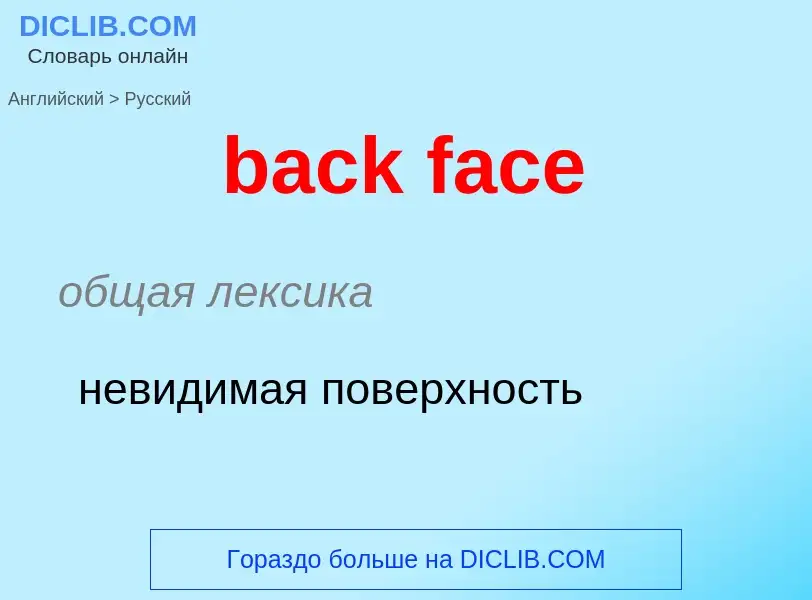Перевод и анализ слов искусственным интеллектом ChatGPT
На этой странице Вы можете получить подробный анализ слова или словосочетания, произведенный с помощью лучшей на сегодняшний день технологии искусственного интеллекта:
- как употребляется слово
- частота употребления
- используется оно чаще в устной или письменной речи
- варианты перевода слова
- примеры употребления (несколько фраз с переводом)
- этимология
back face - перевод на русский
общая лексика
невидимая поверхность
добыча полезных ископаемых
угольный забой
Определение
I'll have whisky neat with a beer back.
back button panic The spasmodic, uncoordinated movements you make when you're surfing porn on the Net and you realise that somebody is standing behind you and can see what you're doing...
I'd've managed to click out of weirdogirl.com before Mom saw anything if it hadn't been for back button panic.
Википедия

In computer graphics, back-face culling determines whether a polygon of a graphical object is drawn. It is a step in the graphical pipeline that tests whether the points in the polygon appear in clockwise or counter-clockwise order when projected onto the screen. If the user has specified that front-facing polygons have a clockwise winding, but the polygon projected on the screen has a counter-clockwise winding then it has been rotated to face away from the camera and will not be drawn.
The process makes rendering objects quicker and more efficient by reducing the number of polygons for the program to draw. For example, in a city street scene, there is generally no need to draw the polygons on the sides of the buildings facing away from the camera; they are completely occluded by the sides facing the camera.
In general, back-face culling can be assumed to produce no visible artifact in a rendered scene if it contains only closed and opaque geometry. In scenes containing transparent polygons, rear-facing polygons may become visible through the process of alpha composition. In wire-frame rendering, back-face culling can be used to partially address the problem of hidden line removal, but only for closed convex geometry.
A related technique is clipping, which determines whether polygons are within the camera's field of view at all.
Another similar technique is Z-culling, also known as occlusion culling, which attempts to skip the drawing of polygons that are covered from the viewpoint by other visible polygons.
In non-realistic renders certain faces can be culled by whether or not they are visible, rather than facing away from the camera. "inverted hull" or "front face culling" can be used to simulate outlines or toon shaders without post-processing effects.


